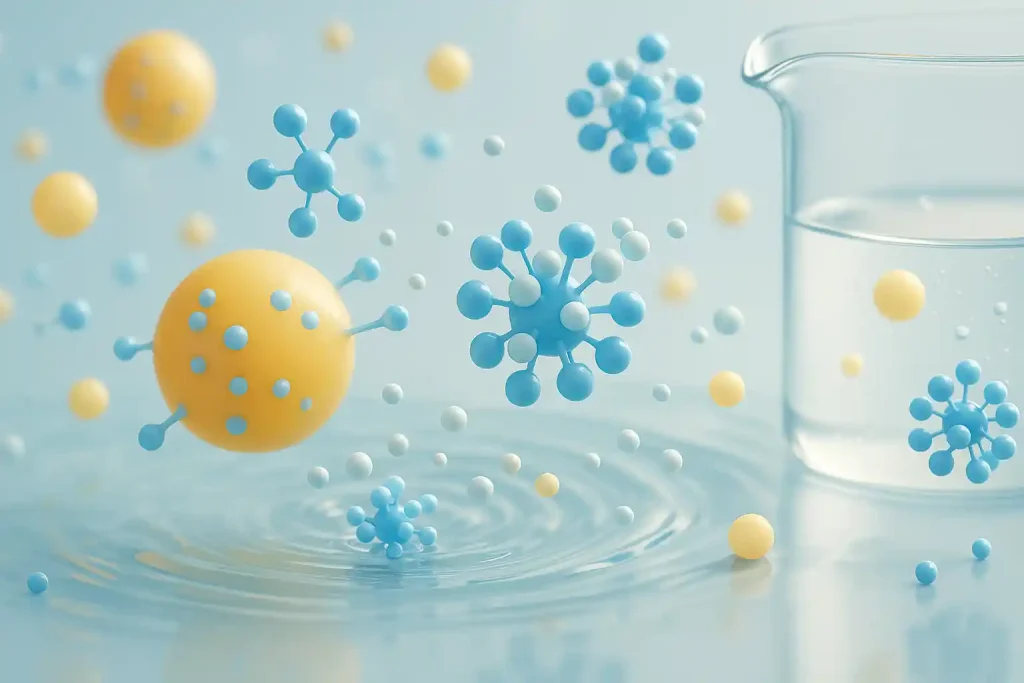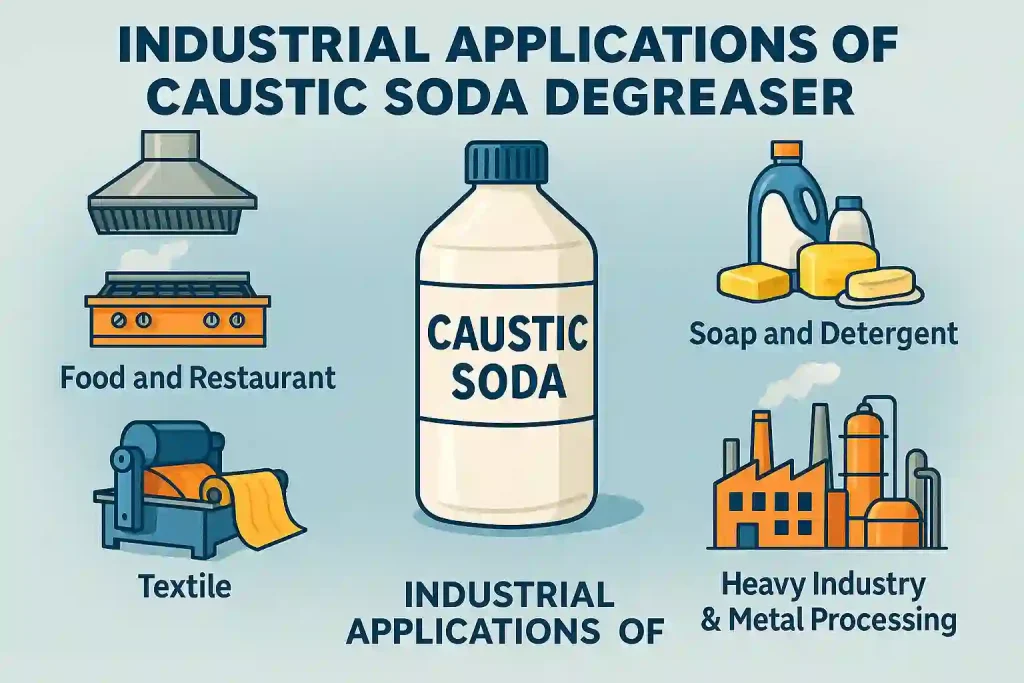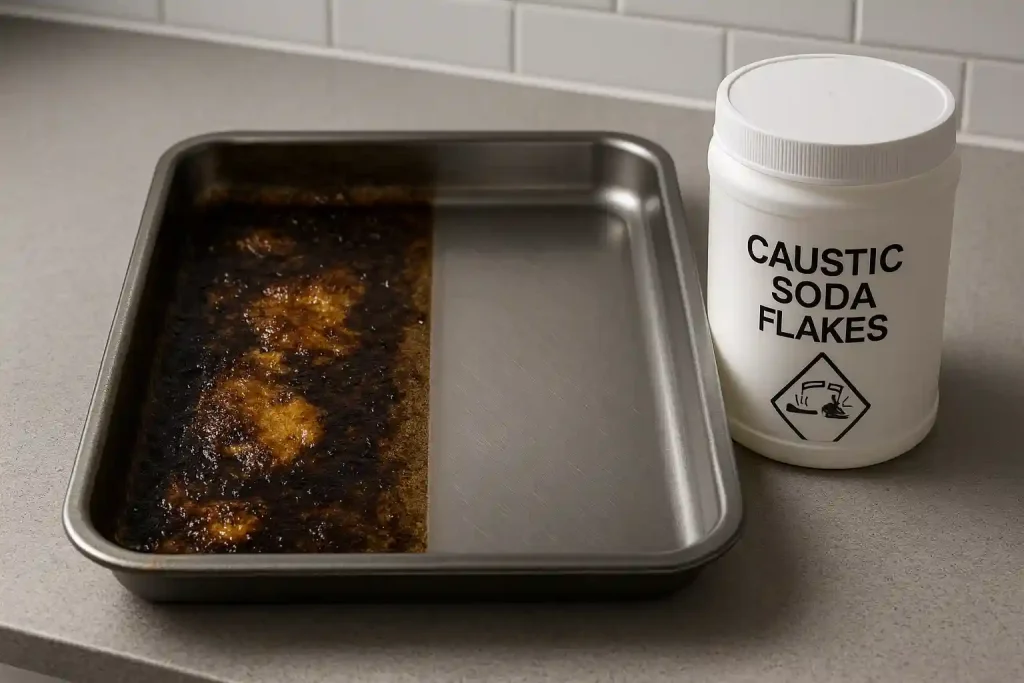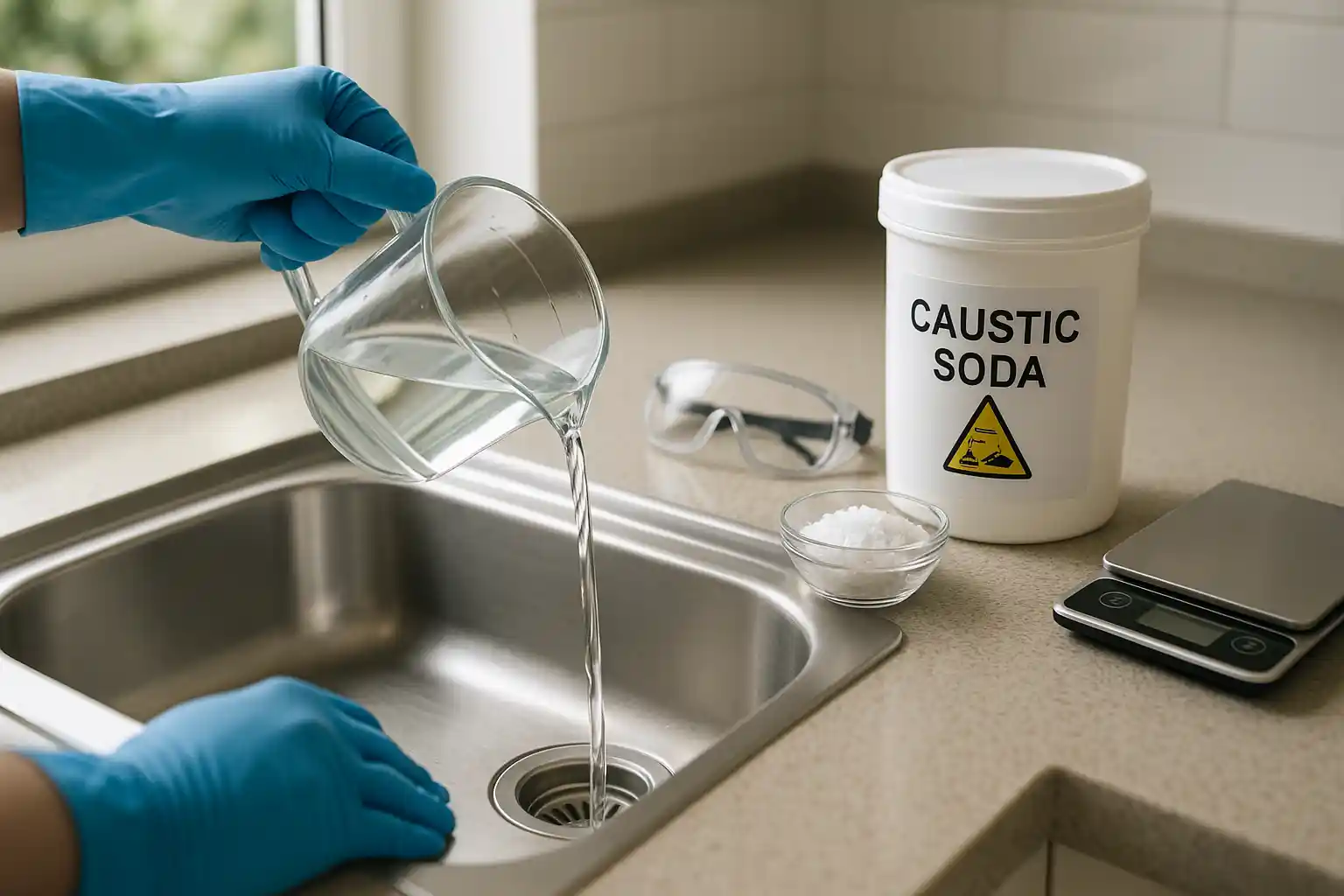Grease is one of the toughest enemies in both households and industries. From oily kitchen drains to industrial ovens coated in fat, grease buildup not only creates hygiene issues but also affects efficiency and safety.
While countless cleaning products claim to solve the problem, only one solution consistently earns the title of king of degreasing: caustic soda degreaser.
Also known as sodium hydroxide or lye, caustic soda degreaser has been a cornerstone of cleaning and industrial processes for decades. In 2025, its relevance is stronger than ever.
Why? Because grease problems haven’t gone away they’ve grown with modern lifestyles, fast food, large-scale food production, and heavy industry.
Why Caustic Soda Degreaser Is Unmatched
Most cleaning agents try to cover grease with surfactants or solvents. They might loosen the top layer, but the root of the problem remains. Caustic soda works differently. Its chemical reaction breaks down grease at the molecular level, transforming insoluble fats into water-soluble compounds that can be rinsed away completely.
The result is a thorough clean:
- Drains unclogged and flowing freely
- Kitchen ovens shining like new
- Industrial equipment restored to peak efficiency
No other substance combines speed, affordability, and effectiveness in quite the same way.
Everyday Example – From Kitchens to Restaurants
Imagine facing a clogged kitchen sink after a holiday dinner. The drain is packed with grease, soap scum, and food particles. Standard dishwashing liquid won’t help. But with a carefully diluted solution of caustic soda degreaser, the blockage dissolves in minutes, saving time and money.
Now scale that up to an industrial kitchen serving hundreds of meals per day. Grease buildup on hoods, grills, and drains becomes not just an inconvenience, but a fire hazard and health risk. In these environments, caustic soda degreaser is indispensable.
A Hero With Caution
Of course, every hero has its limits. Caustic soda is highly corrosive and must be handled with care. Without gloves, goggles, and proper ventilation, it can damage skin, eyes, and even sensitive surfaces like aluminum. That’s why responsible use is as important as the product itself.
Why 2025 Still Relies on Caustic Soda Degreaser
As we move further into 2025, sustainability and efficiency dominate global industry. Yet the demand for reliable degreasing solutions remains constant. While eco-friendly alternatives like enzyme-based cleaners are gaining popularity, they cannot yet match the speed and effectiveness of sodium hydroxide.
- In households, it saves homeowners from costly plumbing bills.
- In industries, it ensures compliance with hygiene standards and reduces downtime.
- In manufacturing, it supports soap production, food processing, and textile preparation.
Simply put, caustic soda degreaser is not just a cleaning agent—it’s a foundation of modern hygiene and efficiency.
The Science Behind Caustic Soda Degreaser – How Saponification Works
While most cleaning products work on the surface, caustic soda degreaser goes deeper—right down to the molecular level. To understand why it’s so effective, we need to explore the science behind a fascinating chemical reaction known as saponification.
What Is Saponification?
Saponification is the process of breaking down fats and oils into soap and glycerol. It’s the same reaction used in soap-making for centuries, and it explains why sodium hydroxide remains one of the most powerful degreasers in existence.
When caustic soda (sodium hydroxide) dissolves in water, it releases hydroxide ions (OH⁻). These ions attack the chemical bonds in triglycerides (the main molecules that make up fats and oils). The result is two new products:
- Soap molecules (salts of fatty acids) – which act as surfactants and help grease dissolve in water.
- Glycerol – a harmless by-product often used in cosmetics and pharmaceuticals.
This reaction transforms insoluble grease into substances that can be easily washed away.
Why This Matters for Cleaning
Grease is hydrophobic, meaning it does not dissolve in water. That’s why washing a greasy pan with just hot water is almost useless. But once fats undergo saponification with caustic soda degreaser, they are converted into water-friendly compounds. Suddenly, stubborn grease can be rinsed away effortlessly.
This is why caustic soda degreaser is used everywhere—from unclogging drains in homes to sterilizing industrial equipment. It doesn’t just mask the problem; it chemically destroys it.
Other Reactions Beyond Grease Removal
Caustic soda isn’t limited to fats. Its strong alkalinity also breaks down proteins and certain carbohydrates. This makes it useful for cleaning organic buildup in:
- Food processing equipment
- Brewery and beverage pipelines
- Pharmaceutical production machinery
Its ability to hydrolyze multiple organic compounds explains its versatility in so many industries.
A Double-Edged Sword
The same chemical power that makes caustic soda degreaser effective also makes it dangerous when mishandled. If it can break down fats and proteins in food residue, it can also harm human skin, eyes, and mucous membranes. That’s why professional guidelines from OSHA and the European Chemicals Agency emphasize strict protective measures.
Why Saponification Is Still Relevant in 2025
Some may wonder: with modern detergents and eco-friendly cleaners on the rise, why does saponification still matter? The answer is simple: no alternative reaction matches its speed and completeness.
- Enzyme cleaners may soften grease slowly, but they don’t fully convert it.
- Vinegar or lemon juice may dissolve some residues, but they are weak acids, not true degreasers.
- Commercial degreasers? Many still rely on sodium hydroxide as the active ingredient, just diluted and packaged.
This is why caustic soda degreaser continues to dominate both household and industrial cleaning in 2025.

Home Applications of Caustic Soda Degreaser
Grease problems aren’t limited to factories or restaurants they happen every day in homes around the world. From blocked kitchen drains to stubborn oven stains, grease can quickly turn into frustration.
That’s where caustic soda degreaser proves invaluable. When used correctly, it gives homeowners a reliable, affordable, and fast solution to problems that ordinary detergents can’t solve.
1. Unclogging Grease-Filled Drains
One of the most common household uses of caustic soda degreaser is clearing blocked drains. Over time, grease, soap scum, and food particles accumulate inside pipes, hardening into a thick, water-resistant mass.
How it works:
Dissolving caustic soda in water produces a strong alkaline solution that breaks down fats and oils through saponification. The hardened blockage turns into soap-like compounds and glycerol, which are flushed away with water.
Step-by-step process:
- Wear protective gloves and goggles.
- Dissolve a measured amount of caustic soda flakes in cold water.
- Slowly pour the solution into the clogged drain.
- Wait 15–30 minutes.
- Flush thoroughly with hot water.
The result: a clean, free-flowing drain without the need for costly plumbing services.
2. Cleaning Ovens and Stovetops
Few tasks are more frustrating than scrubbing baked-on grease from an oven or stovetop. Ordinary cleaners often fail, leaving stains behind. But with caustic soda degreaser, even the toughest residues can be removed.
- Apply a diluted solution carefully to the greasy surfaces.
- Leave for a short period (never too long, as prolonged exposure can damage certain surfaces).
- Rinse thoroughly with water.
⚠️ Important: Avoid using on aluminum parts, as caustic soda can corrode them. For stainless steel, glass, and enamel surfaces, however, it is highly effective.
3. Restoring Kitchen Drains and Garbage Disposals
Grease and food scraps in garbage disposals or kitchen traps often cause foul odors and blockages. Using a controlled dose of caustic soda degreaser not only clears the blockage but also neutralizes organic residues that cause bad smells.
4. Outdoor Cleaning – Driveways and Patios
Oil stains from cars or grills often stain driveways, garage floors, or patios. Caustic soda, when diluted and applied carefully, breaks down oily patches, making them easier to wash away with a hose or pressure washer.
5. Homemade Soap Projects
For DIY enthusiasts, caustic soda is also central to soap-making at home. By mixing caustic soda with oils, homemade natural soaps are created. This process requires precision and safety, but it demonstrates how versatile caustic soda can be in a domestic setting.
Safety Reminders for Home Use
Because of its strong alkaline nature, using caustic soda degreaser at home requires responsibility:
- Always wear protective gloves and goggles.
- Work in a well-ventilated area.
- Keep children and pets away.
- Never mix caustic soda with bleach or acidic cleaners (toxic gases can form).
Why Homeowners Still Choose Caustic Soda in 2025
In an age of eco-friendly cleaning sprays and enzyme-based products, one might ask: why is caustic soda still so popular? The answer is simple no alternative matches its speed, affordability, and effectiveness. For households facing serious grease or drain problems, caustic soda remains the go-to solution.

Industrial Applications of Caustic Soda Degreaser
While caustic soda degreaser is powerful in the home, its true impact is most visible in industry. Factories, restaurants, and large-scale operations deal with grease on a completely different level—massive ovens, industrial hoods, miles of piping, and production lines coated with fats, oils, and organic residues. Here, sodium hydroxide is not just a cleaning tool; it’s a necessity for safety, hygiene, and efficiency.
1. Food and Restaurant Industry
Grease is inevitable in food preparation. Restaurants and catering facilities generate large amounts of fatty waste every day. Caustic soda degreaser plays several critical roles:
- Hood and Grill Cleaning: It removes layers of fat from exhaust hoods and grills, reducing fire hazards.
- Floor and Equipment Washing: Diluted solutions clean kitchen floors, drains, and stainless steel counters.
- Pipe Maintenance: Prevents grease buildup in waste lines, ensuring smooth operations.
👉 Many food safety authorities, including the Food Safety Authority of Ireland (FSAI), highlight sodium hydroxide as a standard chemical for cleaning in food industries provided proper rinsing is done.
2. Food Manufacturing and Processing
Large-scale food factories—from chocolate to dairy—rely on caustic soda for more than just cleaning:
- Olive Processing: Used to remove the natural bitterness of olives.
- Dairy Production: Adjusts pH levels in cheese and neutralizes fatty residues in pipelines.
- Chocolate Manufacturing: Helps refine cocoa products by controlling acidity.
Food-grade caustic soda must always comply with strict international standards like Codex Alimentarius to ensure consumer safety.
3. Soap and Detergent Production
The entire soap industry depends on caustic soda degreaser as its backbone. Through saponification, fats and oils are transformed into soaps and detergents.
- Small-Scale: Artisanal soap makers use caustic soda to create handcrafted bars.
- Large-Scale: Industrial manufacturers produce thousands of tons of detergent every year, with sodium hydroxide as the central ingredient.
Without caustic soda, modern soap-making would simply not exist.
4. Textile Industry
In textiles, caustic soda is used in scouring, a process that removes natural oils, waxes, and grease from fibers. Clean fibers absorb dyes better, ensuring brighter and longer-lasting fabrics.
5. Paper and Pulp Industry
Paper production relies heavily on caustic soda to break down lignin and greasy residues in wood pulp. By removing these impurities, caustic soda degreaser ensures paper comes out whiter and cleaner.
6. Pharmaceutical and Chemical Manufacturing
In pharmaceuticals, sodium hydroxide is used for cleaning production equipment contaminated with organic matter. It ensures sterilization before sensitive drug batches are produced. Chemical plants also employ it for neutralization and degreasing.
7. Heavy Industry and Metal Processing
In metal processing and oil refining, caustic soda helps clean pipelines, tanks, and machinery. Its strong alkaline properties dissolve oil residues that would otherwise clog systems or reduce efficiency.
Why Industry Still Relies on Caustic Soda in 2025
Despite advances in eco-friendly solutions, industries continue to trust caustic soda degreaser because:
- It’s fast and effective against even the heaviest grease.
- It’s affordable compared to enzyme or solvent-based cleaners.
- It’s multi-purpose, working across many industries from food to textiles.
Of course, industrial use requires strict safety protocols, trained staff, and compliance with regulatory standards.

Safety, Standards, and Common Mistakes When Using Caustic Soda Degreaser
Powerful cleaning agents always come with risks—and caustic soda degreaser is no exception. Its ability to dissolve fats, oils, and organic matter also means it can damage human tissue, sensitive surfaces, and the environment if used carelessly. That’s why international safety agencies like OSHA and the European Chemicals Agency (ECHA) classify sodium hydroxide as a hazardous substance requiring strict handling protocols.
Safety Rules for Handling Caustic Soda Degreaser
1. Always Wear Protective Equipment
- Gloves: Use chemical-resistant gloves (nitrile or rubber).
- Eye Protection: Goggles or a face shield are non-negotiable.
- Clothing: Long sleeves and aprons prevent skin exposure.
- Ventilation: Work in well-ventilated areas to avoid inhaling vapors.
2. Proper Dilution
Never use caustic soda flakes directly on surfaces. Always dissolve slowly in cold water. Remember the golden rule: add caustic soda to water, never water to caustic soda. Reversing the order can cause a violent reaction with splashes of hot, caustic liquid.
3. Storage Guidelines
Keep caustic soda in tightly sealed containers, away from moisture, children, and pets. Sodium hydroxide is hygroscopic—it absorbs water from the air and loses effectiveness if improperly stored.
4. Disposal
Do not pour concentrated caustic soda directly into drains or the environment. Neutralize leftover solutions with vinegar or citric acid before disposal, and follow local waste management regulations.
International Standards and Regulations
- OSHA (USA): Requires hazard communication, PPE, and eyewash stations in facilities using sodium hydroxide.
- ECHA (EU): Mandates hazard pictograms and safety labeling on all caustic soda packaging.
- Codex Alimentarius (FAO/WHO): Sets purity standards for food-grade caustic soda used in processing olives, cocoa, and cheese.
These standards exist because accidents involving caustic soda can cause severe burns or blindness if safety is ignored.
Common Mistakes to Avoid
Mistake 1: Using Industrial-Grade for Food Applications
Industrial sodium hydroxide may contain impurities. Only food-grade caustic soda degreaser should be used in food processing.
Mistake 2: Skipping Rinsing
Incomplete rinsing leaves chemical residues that can ruin flavor, corrode surfaces, or cause health issues.
Mistake 3: Mixing With Other Chemicals
Combining caustic soda with bleach or acids releases toxic gases. Always use it alone with water.
Mistake 4: Overuse in Drains
While effective, repeated heavy use in aluminum pipes can cause corrosion. Balance is key.
Mistake 5: Ignoring PPE
Many accidents happen because users think “just a small amount” is safe. Even a drop can cause burns or permanent eye damage.
Why Safety Matters Even More in 2025
As industries demand efficiency, workers often try to speed up cleaning tasks. But with chemicals like caustic soda degreaser, cutting corners can lead to accidents. Following safety guidelines ensures not just clean results but also a safe workplace and home.
Real-World Case Studies – Caustic Soda Degreaser in Action
Case Study 1: Restaurant Exhaust Hood Cleaning
A large restaurant in Tehran struggled with thick grease layers inside its exhaust hoods. Regular detergent-based cleaners failed to remove the buildup, creating a fire hazard. By implementing a scheduled cleaning routine using caustic soda degreaser, the team eliminated the grease within 40 minutes, restored air circulation, and significantly reduced fire risk.
Case Study 2: Household Drain Rescue
During a family gathering, a homeowner faced a completely clogged kitchen drain. Instead of calling a plumber, they dissolved caustic soda flakes in water and poured it into the drain. Within 25 minutes, the blockage cleared, and the sink returned to normal. The total cost was a fraction of plumbing services.
Case Study 3: Soap Production in Small Industry
A mid-sized soap manufacturer in the Middle East optimized its production line by switching to bulk caustic soda degreaser. The saponification process became faster and more consistent, lowering costs while producing higher-quality bars that met international export standards.
Alternatives to Caustic Soda Degreaser – Do They Measure Up?
While some alternatives exist, none match the versatility and strength of sodium hydroxide:
- Enzyme-Based Cleaners: Eco-friendly but too slow for heavy industrial grease. Best for light, routine cleaning.
- Acidic Cleaners (Vinegar, Lemon): Useful for mineral deposits, not fats. They fail to break down grease chemically.
- Commercial Degreasers: Convenient and safer to handle, but many already contain diluted caustic soda as their active ingredient.
Verdict: For light cleaning, alternatives work. But for stubborn, large-scale grease problems, caustic soda degreaser remains unmatched.
Frequently Asked Questions (FAQs)
1. Is caustic soda degreaser safe for home use?
Yes, but only when diluted and handled with protective gear. Never use it directly or mix it with bleach.
2. Can it damage pipes?
It’s safe for PVC and stainless steel but can corrode aluminum with frequent overuse. Always flush with water afterward.
3. How does it compare to commercial drain cleaners?
Most drain cleaners are based on sodium hydroxide. Buying caustic soda flakes directly is more cost-effective and powerful, but requires careful handling.
4. What’s the difference between caustic soda and baking soda?
Baking soda (sodium bicarbonate) is a mild alkali used in cooking. Caustic soda (sodium hydroxide) is a strong alkali used in heavy-duty degreasing.
5. Where can I buy caustic soda degreaser?
You can order directly from caustic-soda.ir, a trusted supplier for both home and industrial use.
Final Thoughts – Why Caustic Soda Degreaser Still Reigns in 2025
From household kitchens to global industries, grease remains one of the toughest cleaning challenges. And despite new products and eco-friendly solutions, caustic soda degreaser continues to dominate because of its unmatched:
- Speed: Works in minutes, not hours or weeks.
- Effectiveness: Breaks down grease at the molecular level.
- Versatility: Suitable for homes, restaurants, factories, and soap-making.
- Affordability: Cost-effective compared to specialized alternatives.
Handled responsibly, caustic soda isn’t just a degreaser—it’s a tool of efficiency, safety, and reliability.
Ready to experience the unbeatable power of caustic soda degreaser?
Whether you’re a homeowner battling a clogged drain or an industrial manager cleaning large-scale equipment, this solution delivers proven results.
👉 Visit caustic-soda.ir today to order high-quality caustic soda flakes. Available in small packs for household use or bulk quantities for industrial applications, all with trusted quality and expert guidance.
Take control of grease—safely, affordably, and effectively.

